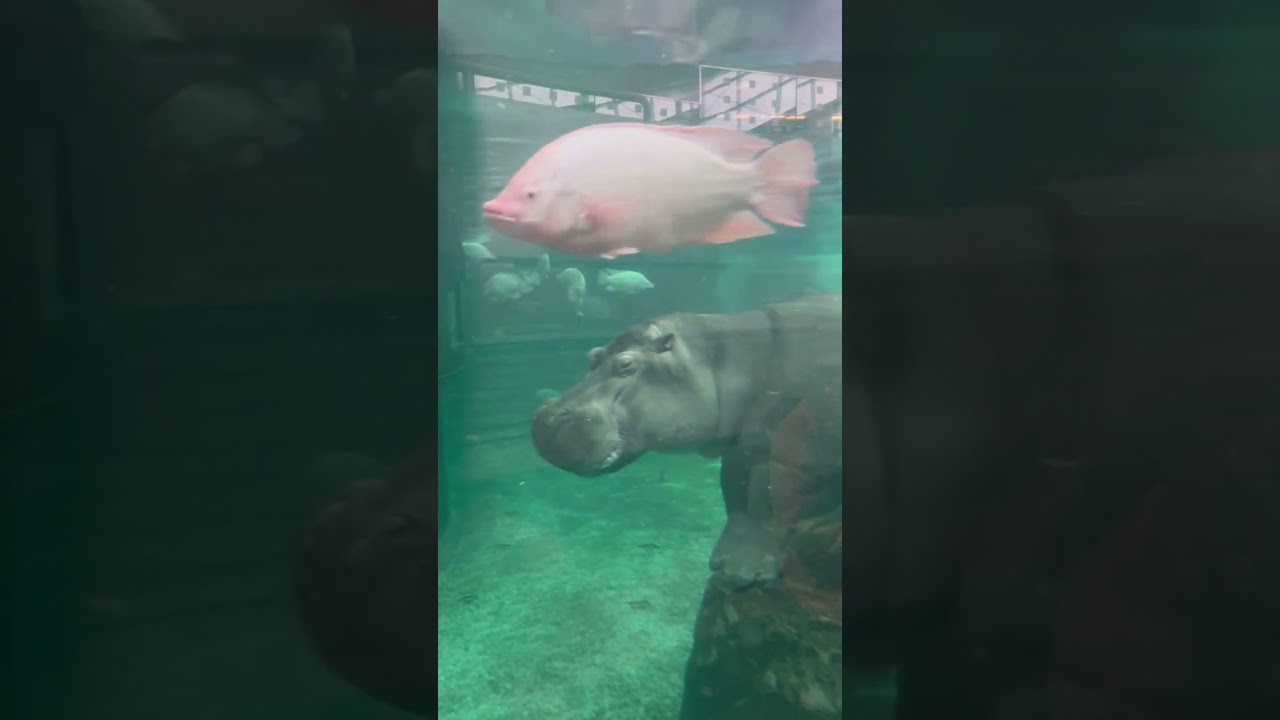- The fascinating interaction between hippos and tilapia in shared aquatic habitats.
- Ecological and behavioral implications of hippos relaxing in tilapia pools.
- Significance of these natural interactions in the context of zoo management and wildlife conservation efforts.
- Discussion on maintaining biodiversity and ecological balance within artificial and natural ecosystems.
- Insights into current practices and strategies in wildlife conservation focusing on aquatic mammals like hippos.
Hippos, often seen as the bulky giants of African rivers, lead intriguing lives beyond their formidable exterior. A captivating example of their interaction with smaller aquatic residents is highlighted in scenes where hippos relax in tilapia pools. This intriguing phenomenon not only sheds light on the symbiotic relationships occurring in nature but also provides insights into effective zoo management and wildlife conservation. Let’s explore this fascinating dynamic and its broader ecological and conservation implications.
Hippos, or Hippopotamus amphibius, are semi-aquatic mammals native to sub-Saharan Africa. Their habitats predominantly include rivers, lakes, and mangrove swamps. Essential to their survival, these water bodies offer the hippos not only hydration but also protection from high temperatures. Hippos spend much of their day submerged in water, creating a fascinating interaction with the aquatic life around them. In specific habitats, tilapia, a group of cichlid fish, have been observed sharing these watery retreats with hippos. This coexistence is more than coincidental.
The interaction between hippos and tilapia is a classic example of mutualism, a type of symbiotic relationship where both species benefit. Hippos, while resting and cooling in water, produce nutrient-rich waste that contributes to the aquatic ecosystem. Tilapia feed on the algae that flourish on these nutrients and, in turn, clean the hippos of parasites. This relationship highlights nature’s intricate balancing act, where every organism plays a vital role in the broader ecosystem health.
From a behavioral perspective, this interaction showcases the adaptability and resilience of wildlife in shared environments. Hippos, often misunderstood as solitary creatures due to their aggressive territorial behavior, exhibit social tolerance under certain conditions. Their capacity to coexist with species like tilapia illustrates a sophisticated level of ecological interaction that is essential for maintaining environmental equilibrium.
These natural interactions are mirrored in zoo settings but require careful planning and management. Zoos strive to recreate environments that are ecologically close to the wild habitats of their resident species. In these controlled settings, observing the interaction between hippos and tilapia offers valuable data for researchers and zookeepers. It aids in understanding animal behaviors, dietary preferences, and social structures. Additionally, such insights are pivotal in formulating strategies to enhance animal welfare and enrichment in zoological parks.
Zoo management faces numerous challenges in replicating natural habitats, especially for large aquatic mammals like hippos. A significant aspect is ensuring the ecological balance of these specially designed aquatic spaces. Proper filtration systems and regular monitoring are critical to maintaining water quality. Tilapia pools, aligned with their natural diets and behaviors, present a sustainable model, promoting a healthy habitat for both species. Moreover, visitors can witness an authentic interplay between the creatures, fostering greater awareness and appreciation for wildlife ecosystems.
The relevance of such observations extends beyond zoo boundaries, resonating deeply in the sphere of wildlife conservation. The interdependence between hippos and tilapia emphasizes the significance of preserving biodiversity and protecting interconnected ecosystems. Hippos are classified as vulnerable due to habitat loss, poaching, and human-wildlife conflicts that threaten their existence. Conservation programs focus on safeguarding water bodies and ensuring sustainable habitat conditions, essential for the survival of both hippos and the aquatic creatures they interact with.
Efforts to conserve hippos are pivotal, not only for their direct survival but also for the health of their ecological communities. These programs involve habitat restoration, anti-poaching initiatives, and community engagement to mitigate human-wildlife conflicts. Moreover, the role of international conservation organizations is critical in providing the necessary resources and advocacy to protect these species on a global scale.
Hippos relaxing in tilapia pools represent a microcosm of ecological balance, providing insights into the broader endeavors of conserving wildlife and their habitats. This behavior is not a mere chance occurrence but an embodiment of the complex interactions that sustain ecosystems. As we continue to study and conserve these interactions, the knowledge gained can drive more effective strategies for environmental preservation.
In summary, the interplay between hippos and tilapia provides a lens through which we can better understand the dynamics of natural and artificial ecosystems. It underscores the importance of maintaining biodiversity and achieving ecological balance, especially in curated landscapes like zoos. Moreover, it highlights the critical role of conservation efforts in ensuring the longevity and health of these remarkable species and their habitats. Through understanding and action, we can support ecosystems’ natural harmony and secure a future where wildlife and humans coexist sustainably.
*****
Source Description
Mondays can be tough – we hope you find your hippo zen today. 🦛
#YourZooYYC #hippo #relaxing #tilapia


